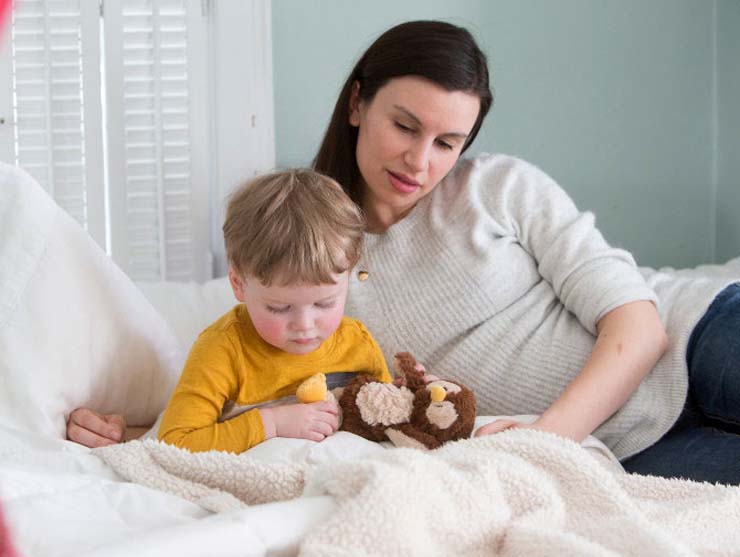You may remember your own security object from your childhood. It may have been a baby security blanket or stuffed animal that you felt like you couldn’t be without. While it started out soft and new, over time, it became worn and may have been falling apart. Sometimes your parents were embarrassed that you carried around a tattered piece of cloth. And yet, your attachment to an object like this may have helped you feel more secure to navigate the world.
Teachers sometimes refer to these as “transitional objects” because they help children transition from home to child care or school. While child care programs have different policies on bringing transitional objects like toddler blankets to the center, providing some flexibility on allowing children to bring these items may help children make a more successful transition.
Hedda Sharapan worked for years with Fred Rogers of Mister Rogers’ Neighborhood. In a recent letter to teachers, Hedda said, “It’s as if the loving touch and scent of a parent are sewn into the very fabric of a blankey or stuffy, so holding it is like getting a hug from mom or dad even when they aren’t there.” Sharapan, too, talks about these objects as “transition objects.” Transition objects are not a sign of weakness, but rather a sign that your child is figuring out ways to navigate the world. Sharapan says, “They’re used by children as a transition to help them make the gradual shift from being completely dependent to being comfortably independent.” Children may use a baby blanket or stuffed animal as a tool to help them feel more relaxed or as a comfort when dealing with change or stress.
Parenting Tips for Your Child's Attachment to a Comfort Object
Here are a few things to consider about security blankets and other security objects:
- Security objects are often adopted between about eight and twelve months.
- If you notice that your young child is starting to become attached to a security object, you may want to buy another so you can switch one out when the other needs washing. But don’t wait too long or the new one won’t have the feel of the original one.
- Of course, all cautions about not sleeping with baby blankets due to the risk of Sudden Infant Death Syndrome (SIDS) apply. No blankets or soft toys are permitted around baby in the crib or family bed up until 12 months of age.
- There is no best age to phase these out, but some parents feel that the transition from toddler to preschool (around age three) might be a good time.
- When phasing out transition objects, use a gradual approach. “Let’s put your blanket over on the shelf for 10 minutes while we play.” Gradually increase the time that the security blanket is out of easy reach.
- Never tease or shame a child for having a security object. And don’t throw it away without telling your child.
- Be supportive and talk about what you are doing. Try saying, “I see that you don’t have your stuffed lamb with you all the time. When you go to preschool, we are going to try leaving your lamb at home. Today, let’s try leaving it at home while we go to the playground. We don’t want your lamb to get dirty.”
- Owen by Kevin Henkes is a children’s book that won a Caldecott Honor. Owen is a mouse with a safety blanket, and the book tells the story of how his family lovingly approaches this issue. You and your child may enjoy this book together.
Resources:
American Academy of Pediatrics. https://www.healthychildren.org/English/ages-stages/baby/Pages/Transitional-Objects.aspx
Blankets and Stuffys: What We Can Continue to Learn from Fred Rogers: Fred Rogers Center for Early Learning & Children’s Media.
- See which top five expert-recommended baby essentials you should consider if you’re expecting.
- Discover infant and toddler toys that are fun and have an educational component.
- Learn what things you should consider when buying a pacifier and how to help your child break the habit when it’s time.
- Flying with an infant can be challenging, but here are some family traveling tips to make sure you’re as prepared as possible.





